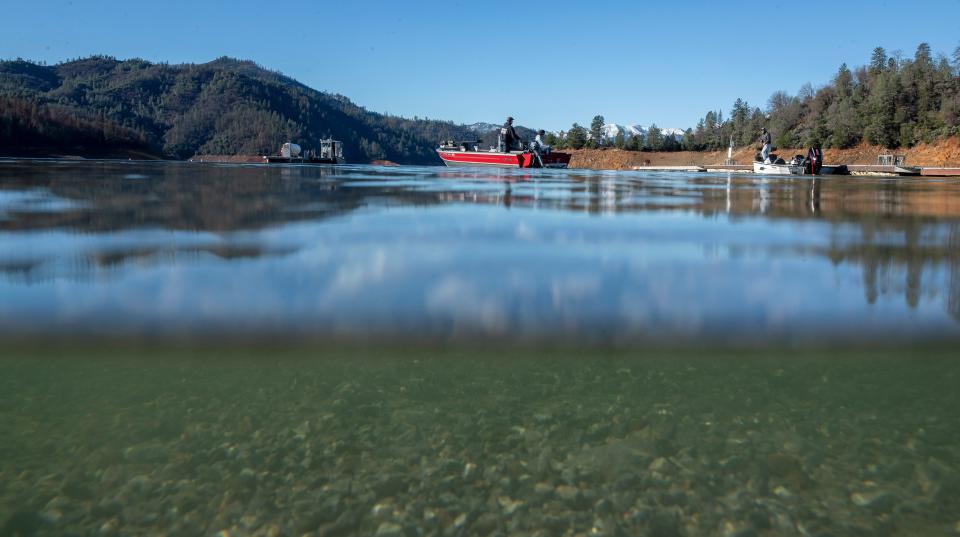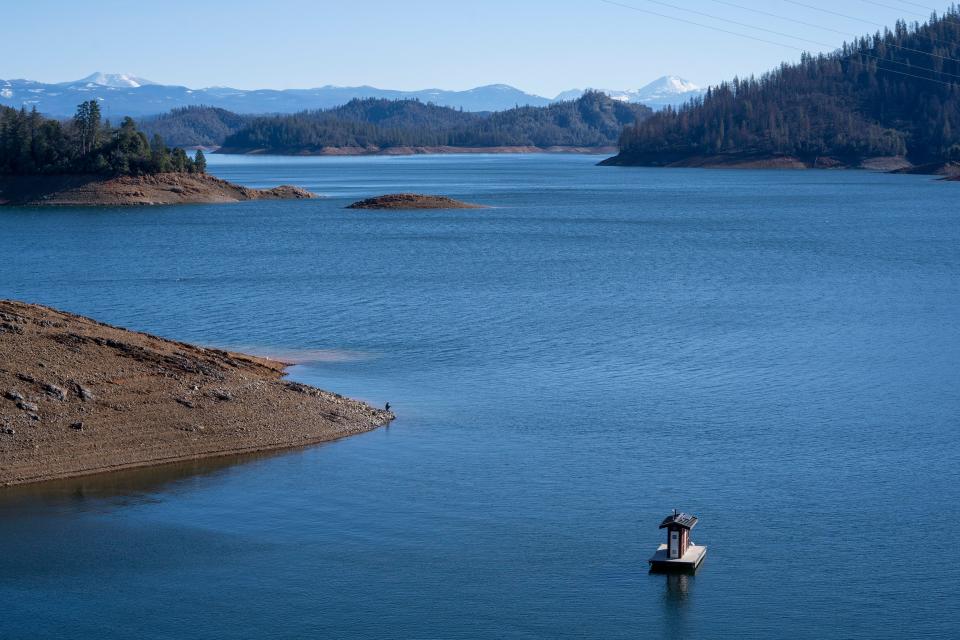Lake Shasta level rising, with more rain on the way. How close is it to being full?
Lake Shasta, California’s largest reservoir, stands at 113% of the historical average and only 52 feet from being full, thanks to the gift of rain the state is receiving so far this winter.
The area received about 1.8 inches of rain last Friday and Saturday, National Weather Service data for the Redding Regional Airport showed.
As of Monday, the lake was at over 1,015 feet of elevation above sea level, which places it 52 feet from its brim, according to the California Department of Water Resources.
The lake is 41 feet higher than it was a year ago when it was at 82% of the historical average and at 974 feet of elevation above sea level.
The lake holds 4.5 million acre-feet of water and is a keystone in the Central Valley Project, supplying water to millions of acres of California farmland.

7-day weather forecast for Northern California
Keep those raincoats and umbrellas handy.
The forecast shows rain through most of this week and into next Tuesday, Jan. 23. The Sacramento Valley could see less than half an inch of rain while an inch to 3 inches of snow could accumulate in the higher passes of mountains.
There could be a break in the weather Thursday and most of Friday before the rain returns. Rain totals from Saturday through Monday could range from 1 to 3 inches in the Central Valley, while the foothills and mountains could see 2 to 6 inches of snow.

Has California recovered from the drought?
The Golden State had one of its wettest years on record after experiencing 31 atmospheric rivers in the 2023 water year. Those brought an end to the fourth multi-year drought Californians have experienced in the past two decades, the National Integrated Drought Information System reported.
The outlook remains positive in 2024.
Related: How full are Lake Shasta, Trinity Lake and other reservoirs going into 2024?
A map of California by the U.S. Drought Monitor shows almost all of the state is out of the drought. The conditions for Jan. 11, the most recent data available as of Monday, also showed that there weren’t any areas that are expected to see below normal precipitation in January.
Only a large swath of Siskiyou County and an area along the Colorado River in San Bernardino and Riverside counties remained under abnormally dry conditions, according to the drought monitor.
So far, December and January are being ranked as the 25th wettest on record since 1895, the National Integrated Drought Information System reported.
This article originally appeared on Redding Record Searchlight: Lake Shasta, California's largest reservoir, 52 feet from being full

